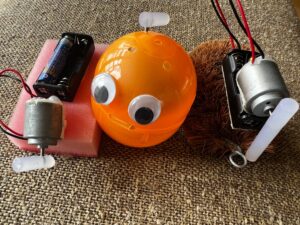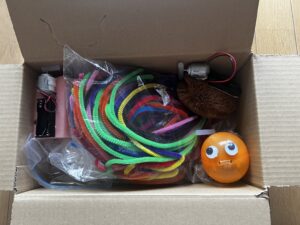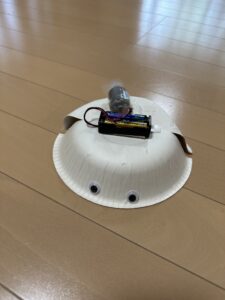
We are planning a workshop at an after-school day care service in Kanazawa. A graduate of my first seminar after arriving at Showa Women’s University is working there, and we are planning to hold a remote workshop in late December. As a result, we decided to use the scribbling machines of the Exploratorium Tinkering Studio in San Francisco, the United States, which I love, as a reference to create a work that moves using familiar objects and motors.
To let the staff of the after-school day care service know about the workshop activities, we first made some samples and sent them to them. Since we were going to go through the trouble, we included a little bit of material so that they could try out various things.

Upon arrival, not only the staff but also the children seemed to have tried the samples together, and I received photos of the samples looking very different. From the pictures, I somehow got the feeling that the workshop had already begun.

Thinking about it again, it seems that, unbeknownst to myself, I had assumed that workshops were to be conducted at a fixed time. While it is difficult to define a workshop itself (whether we call it a workshop or not), it has given me an opportunity to think about designing a workshop that starts and ends gently. A rolling start workshop that gradually accelerates and picks up speed is good, but gradual may be more suitable for a little bit. Before and after the workshop, we may design in advance a so-called “margin time” that only those who want to do the activity can freely use, but it may be a margin where further boundaries are not visible.

With this in mind, I would like to think carefully about the time and place of the workshop through the remote workshop, while suppressing the fact that I might accelerate the process on my own when I hear that people are looking forward to the next sample. I would like to think carefully about the time and place for workshops through remote workshops.
